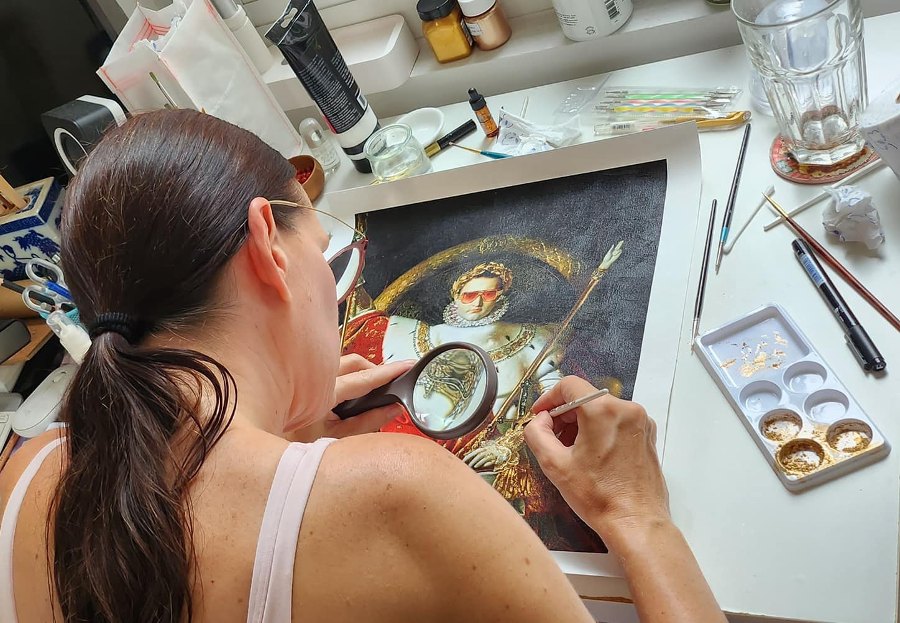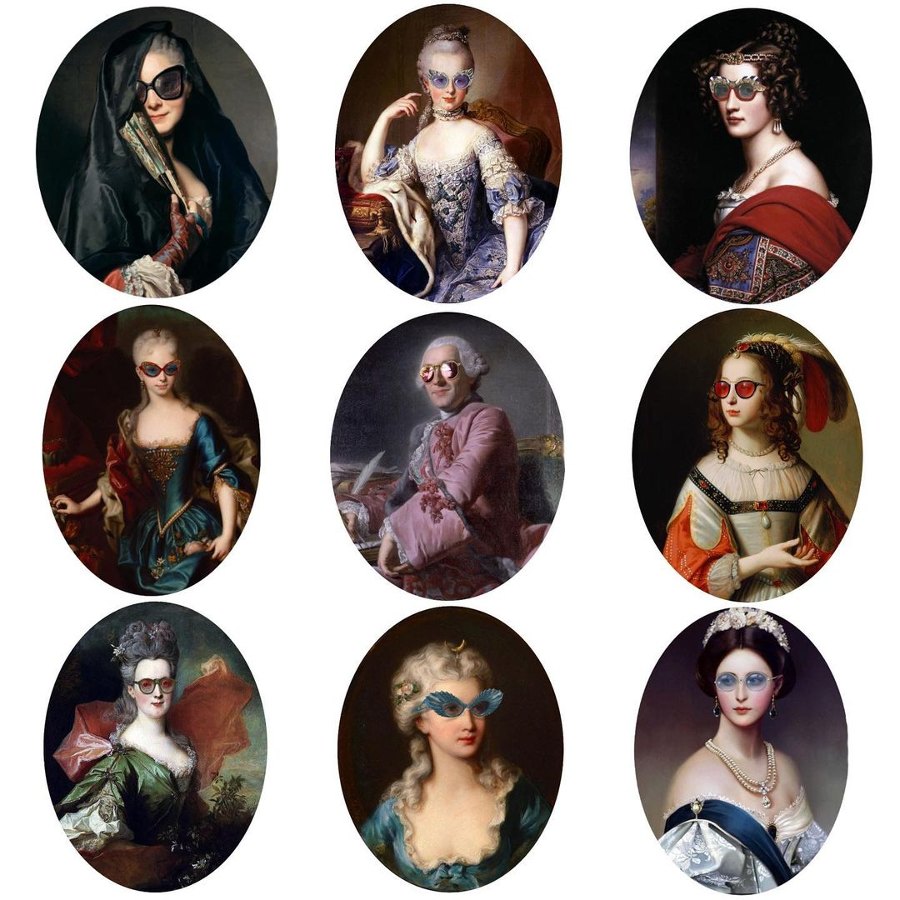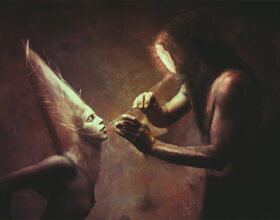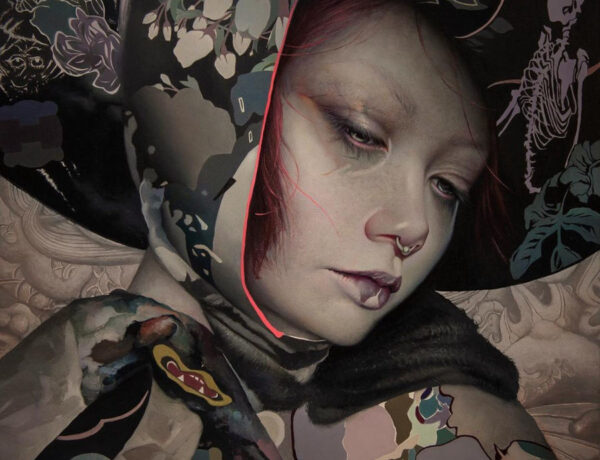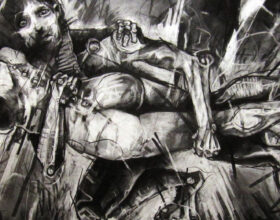How does an innately creative individual with a formal education in fashion and costume design transform an insatiable passion for art history and wearable accessories into a unique new career path? Anne-Kristin Vaudour, who has long admired the visual drama and grandeur of historical portraits, originally imagined that her training at Rome’s Accademia Costume & Moda might pave the way for her future as a high end fashion/accessories designer. However, upon considering “the spectacle of fine silk, brocade ornaments, exuberant hairstyles and precious jewelry” that makes so many old-school portraits stand out, the Singapore-based traditional/digital artist’s entrepreneurial spirit kicked in.
Six years ago, Anne-Kristin Vaudour officially set the wheels of her wildest artistic fantasy in motion by launching her Imperial Eyewear collection, which is – in effect – a glistening cherry perched on top of an already decadent portraiture feast.
Anne-Kristin Vaudour’s somewhat cheeky gimmick – to digitally jazz up the historical painterly likenesses of so many of yesteryear’s aristocrats with her eccentrically designed eyewear confections – ended up resonating with contemporary art aficionados, much to her delight. She’s certainly reveled in the creative fulfillment of her ongoing avant-garde experimentalism, but being able to collaborate with history’s unsung oil painters – which in turn inspires modern day audiences to develop a taste for our artistic trailblazers – has truly imbued her art practice with the type of meaning that lingers in the heart, mind and soul.
We’re pleased to present the following interview with an artist whose desire to inspire informs every aspect of her creative enterprise.
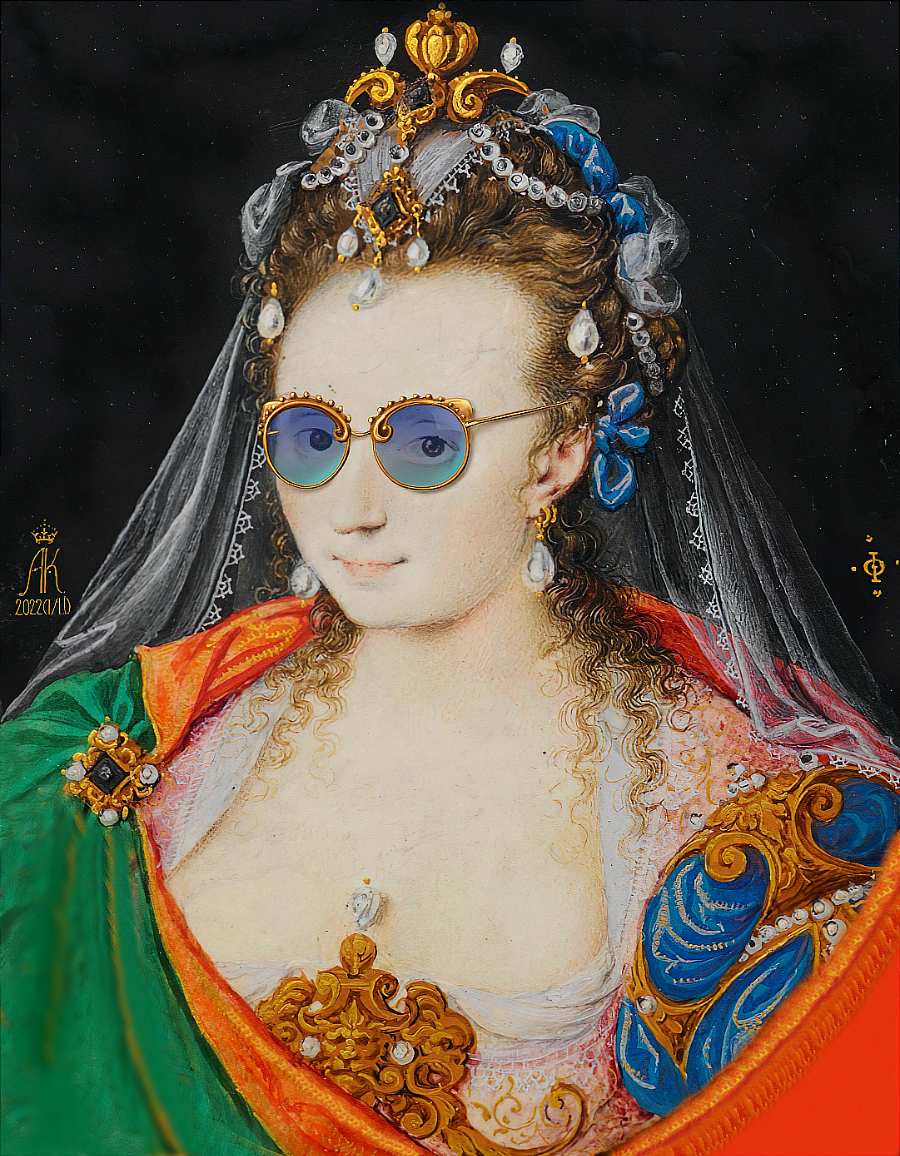
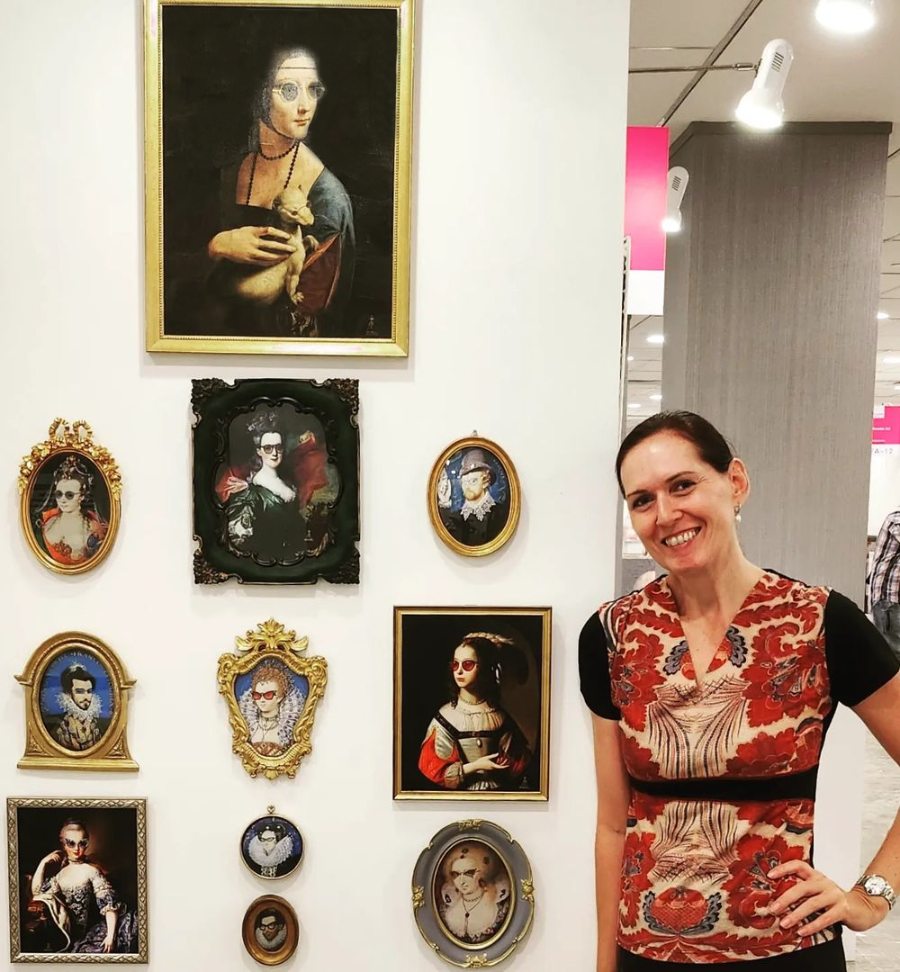
I never regret choosing the path of an artist. Part of the beauty of this profession is that I am constantly a work in progress, always developing and transforming.
Interview With Anne-Kristin Vaudour
You revealed in your previous interview with us that your former career in luxury retail and arts management was financially rewarding but not personally fulfilling. How are you feeling today about the leap of faith that brought you to your current path?
If I hadn’t finally decided, in 2017, to go full time as an artist, the “what if” question would have endlessly haunted me. I’m very glad that I did it. I reached the point in my life where – rather than being a tool of execution for someone else – I needed to realize my own vision and make my own unique impact.

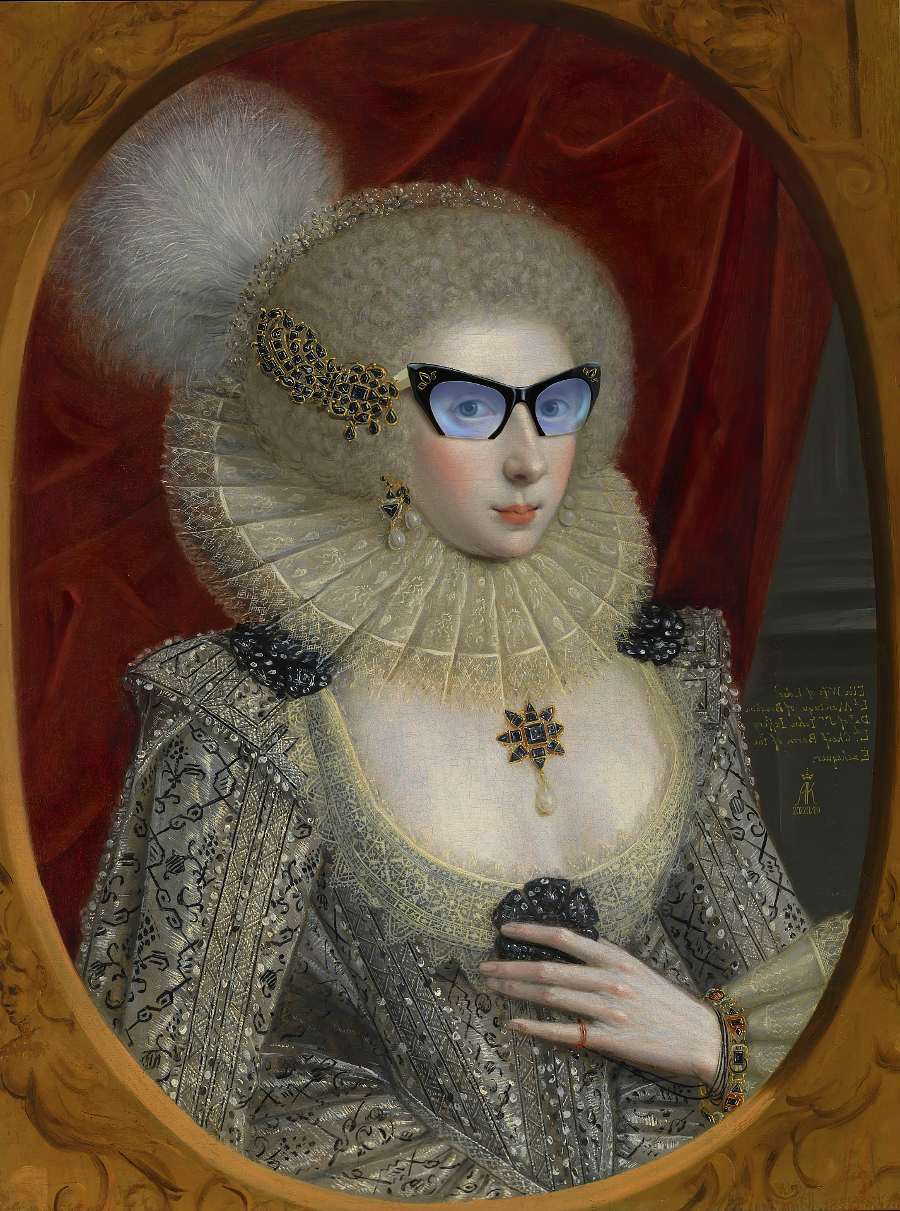
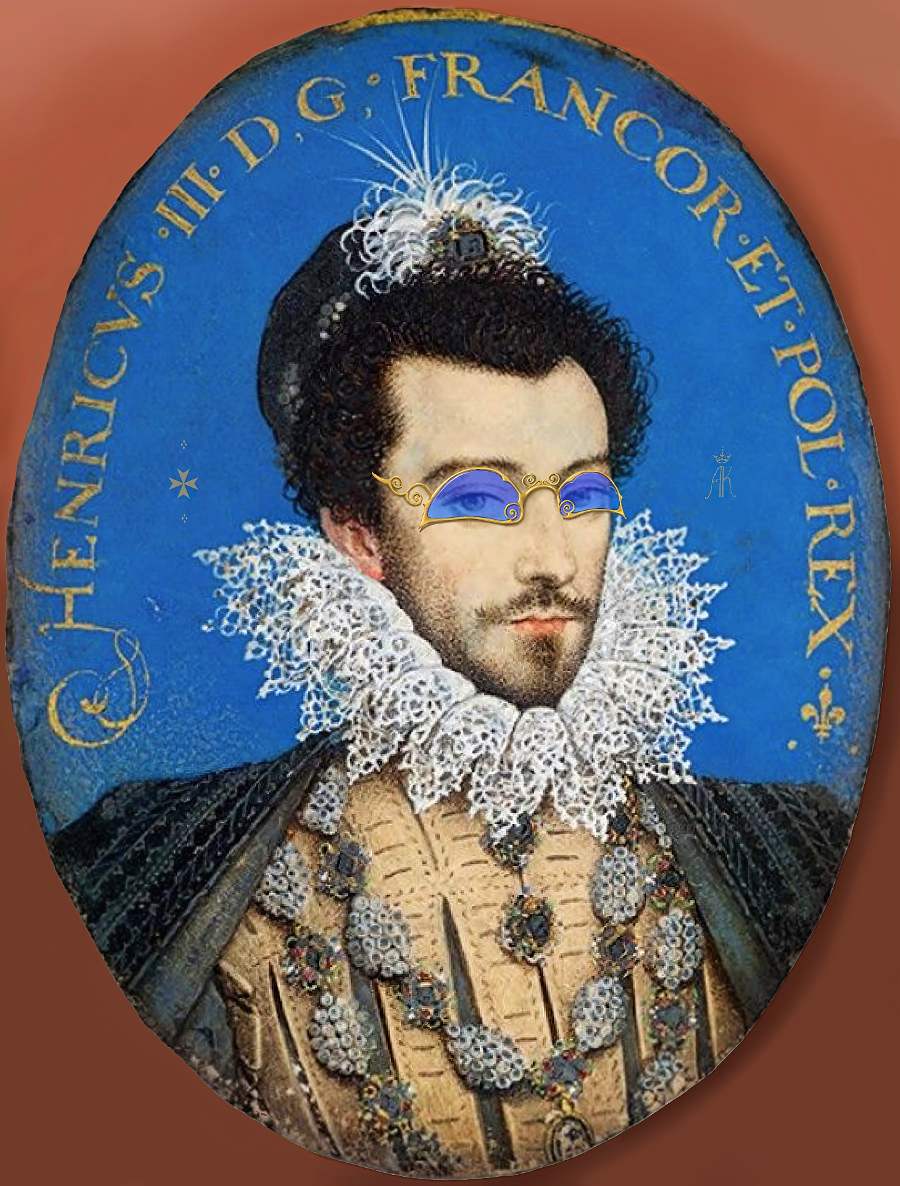
Was ‘being miserable in the wrong career’ a blessing in disguise that compelled you to pursue a fine art path, or would you have inevitably found your way here?
I kept changing jobs to figure out if a different position might make me feel happier, but it never happened. At the same time, I endlessly imagined what it would be like to spend my days creating art. That idea never left me. I went to great extremes to pursue my dream, first by quitting my job, and then by leaving everything behind – moving to Italy – so that I could study traditional art. That decision transformed my life forever.
If my art has found an audience and I manage to make my artistic profession financially sustainable, that means that I have produced something that matters.
Has the reality of what is required to set yourself apart from the crowd altered the romance of this pursuit?
I used to think that I just needed to produce beautiful art, people would love it, buy it, and I’d be a happy artist with a sustainable career. I am less naïve now. I understand just how much background work is required in this profession, plus I have a clearer idea of how to reach my goals. Fortunately, the core idea/romance of my dream – to challenge the limits of the imagination by creating something inspiring that really matters to others – hasn’t changed.
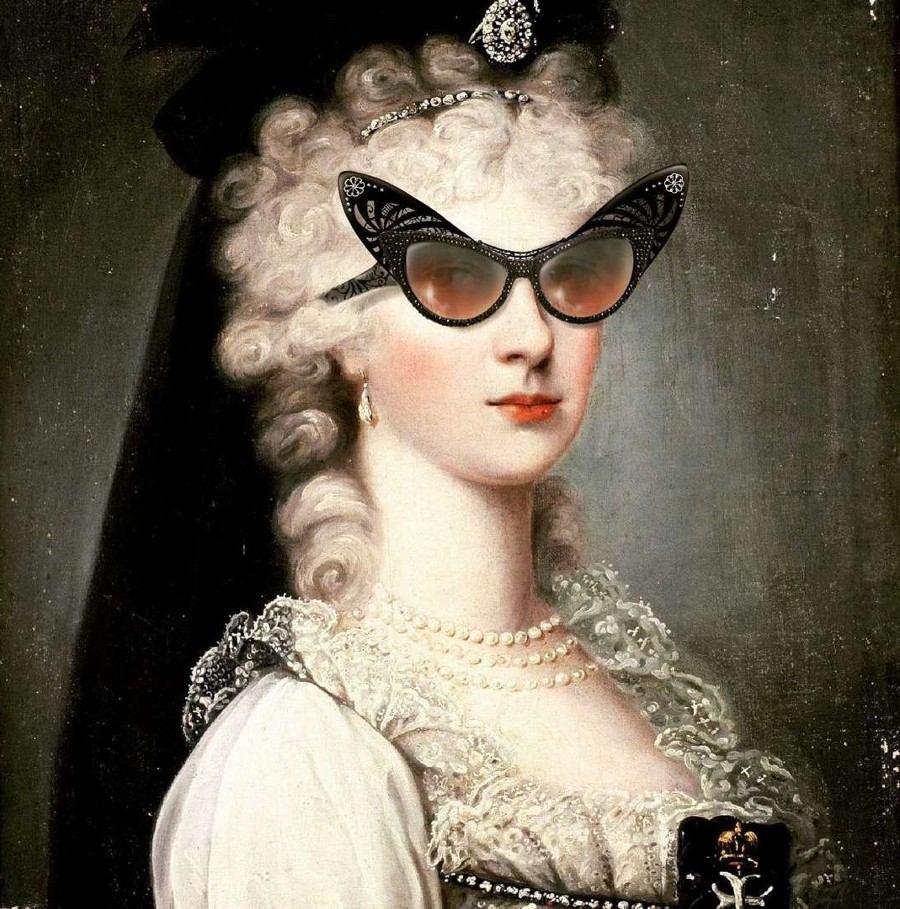
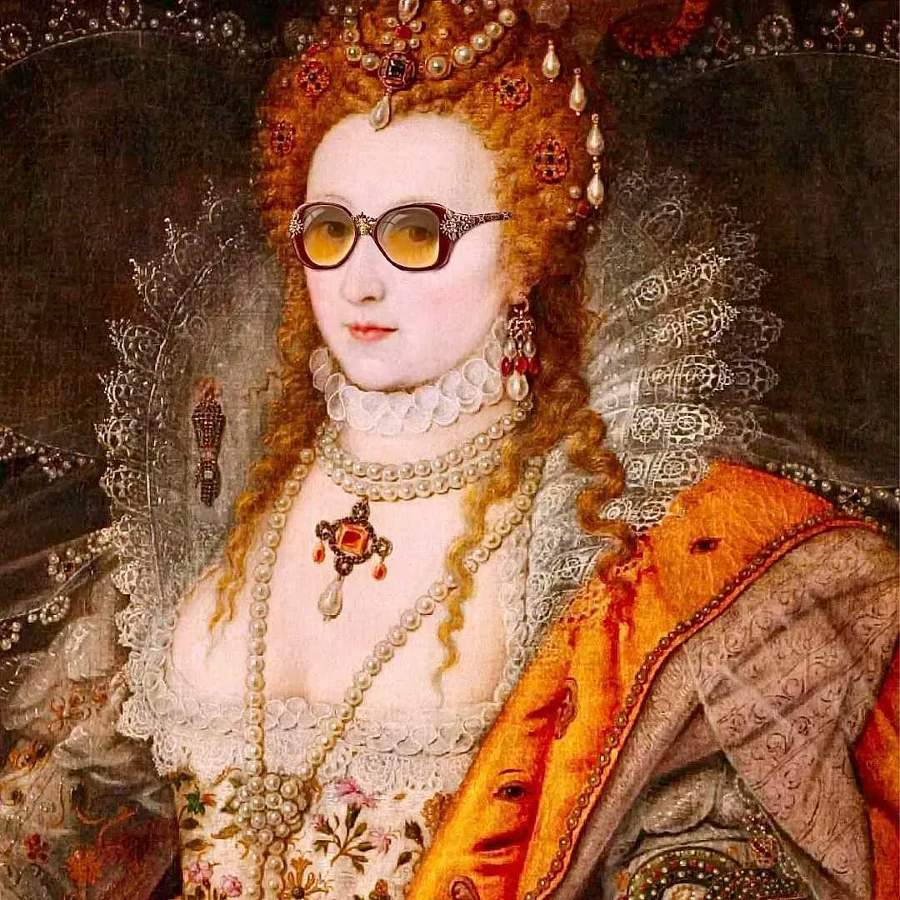
In terms of launching an art business, what key insights do you wish someone would have shared with you several years ago?
There’s a great deal of excellent art out there in infinite styles, so it’s hard to set yourself apart from other creatives. Even if you produce beautiful art, that doesn’t ensure that you’ll be successful since what personally resonates with you may not speak to other people. Another revelation is that those who enjoy financially rewarding creative careers don’t necessarily have the most talent.
That’s why marketing your art/brand building is really important. When your aesthetic becomes recognizable, art lovers will take notice. Developing a strong professional network and consistently approaching people to confidently promote your work must be a priority. Never neglect your fans and collectors, otherwise they go somewhere else.
I went to great extremes to pursue my dream, first by quitting my job, then leaving everything behind and ultimately moving to Italy to study art. That decision transformed my life forever.
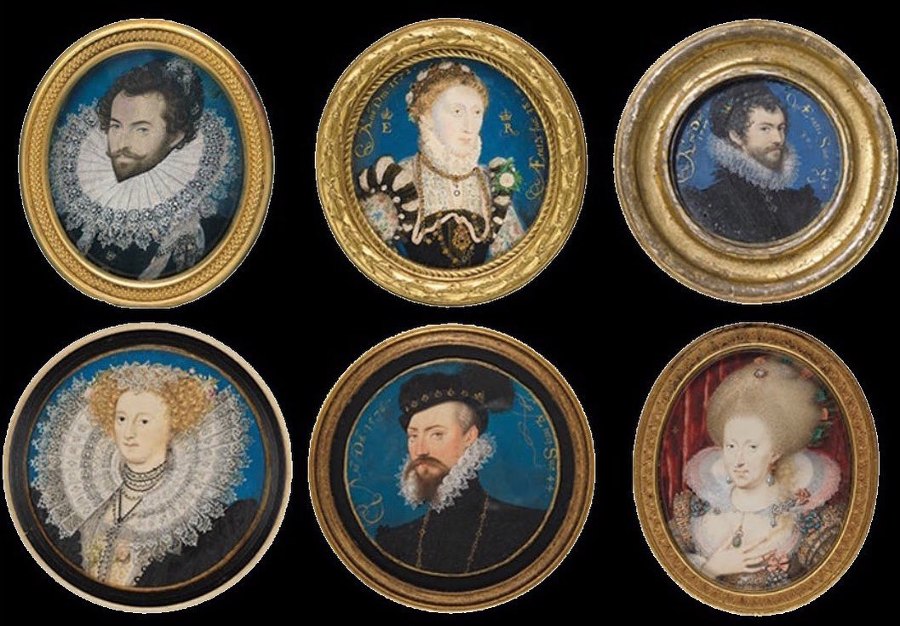
The fanciful digital interventions showcased in your Imperial Eyewear collection are meant to inspire contemporary audiences to appreciate classical artist trailblazers with admirable portraiture skills. Why is tipping a hat to yesteryear’s creatives so essential to your brand?
I have such tremendous respect for the Old Masters who created such invaluable treasures. Sadly, today’s art lovers are only familiar with the big names, so my digital interventions enable me to shine a light on the lesser known yet still admirable talents.
Why is exploring the biography of the personalities behind each portrait an integral aspect of your creative process?
I use historical portraits as the basic canvas for my digital interventions. Learning as much as I can about the aristocratic personalities featured in those works of art ultimately informs just how sumptuous (or even subdued) my eyewear designs are.
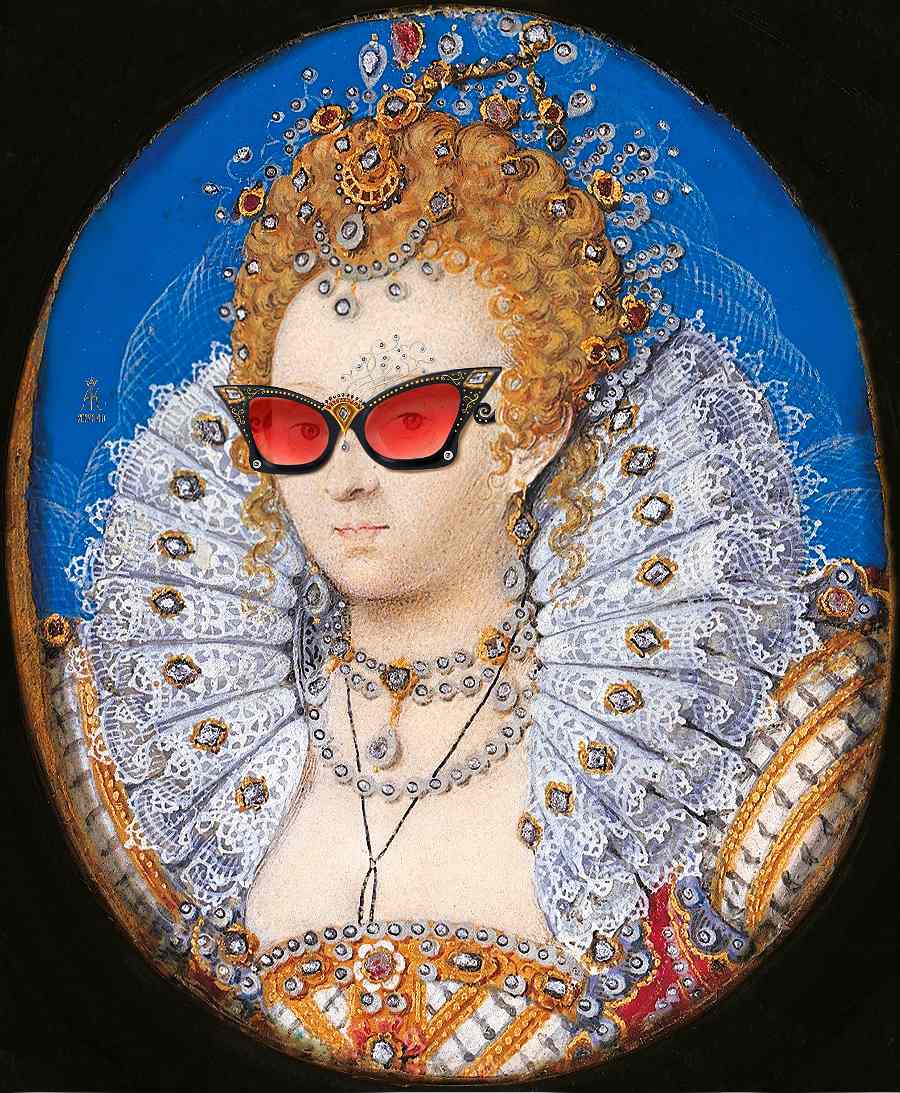
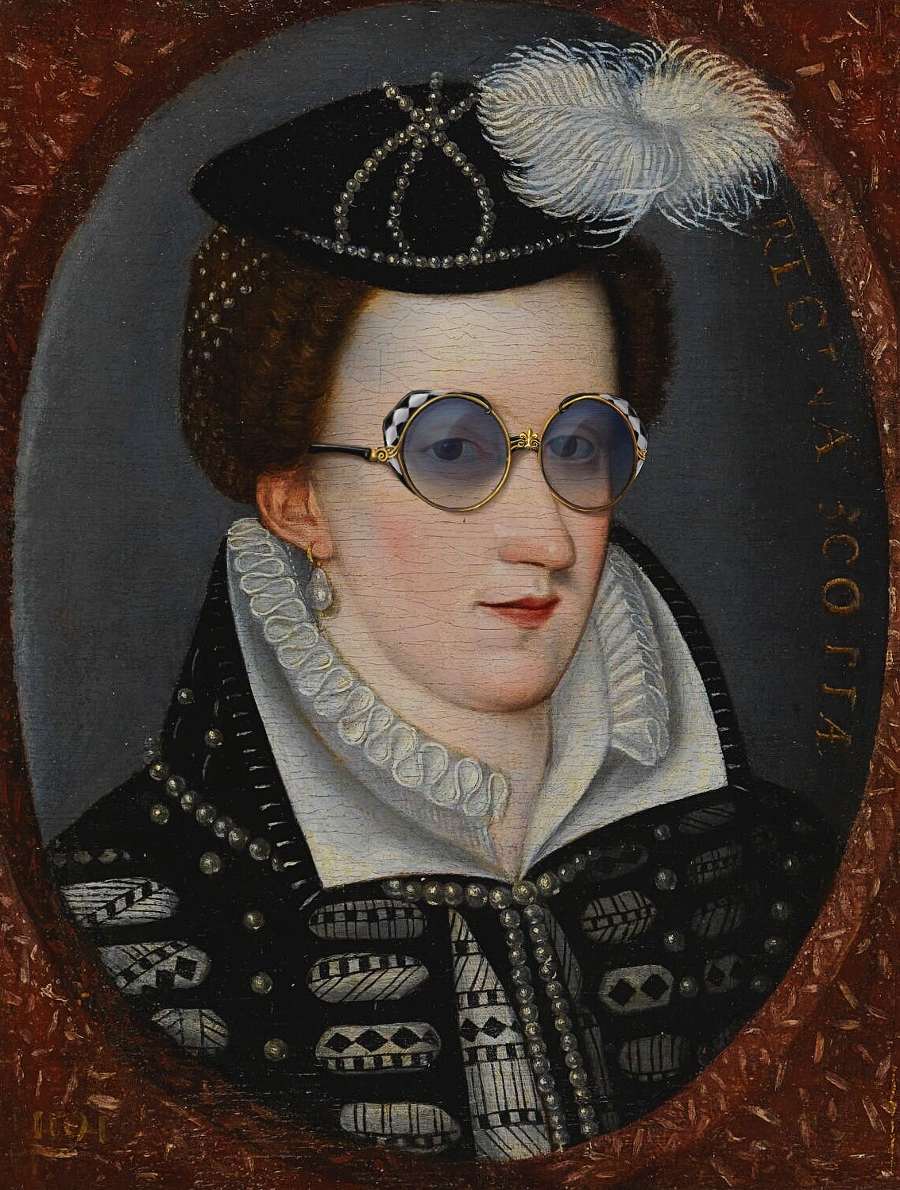
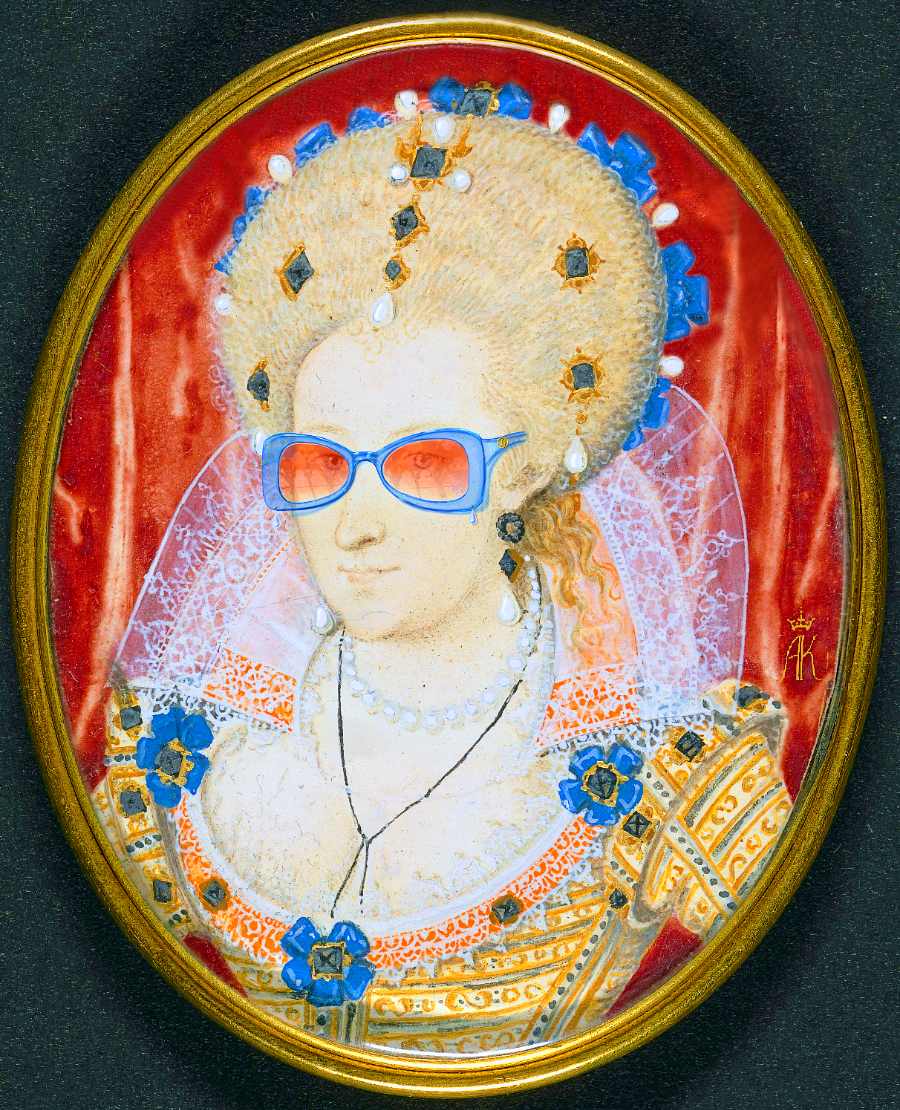
Royal miniaturist Nicholas Hilliard’s highly regarded portraits have inspired your extensive new array of your digital interventions. How did his work initially land on your radar?
Nicholas Hilliard’s tiny little creative canvases – which are often not much bigger than a watch dial – left a great impression on me when I saw them many years ago at the Victoria & Albert Museum in London. In a time when photography didn’t yet exist, he earned a reputation as a sophisticated creator of some of the earliest realistic portraits.
Fortunately, the core idea/romance of my dream – to challenge the limits of the imagination by creating something inspiring that really matters to others – hasn’t changed.
You’ve forged a creative alliance across time and space with Nicholas Hilliard that has resulted in myriad eye-catching contemporized portraits. In what way do the textural embellishments that you add to prints of your collaborations pay further tribute to the much-esteemed royal miniaturist?
I admire the fact that Hilliard adorned his portraits with shiny, jewel-like flourishes that seemed three dimensional, so I’m creating a 21st century version. He used a multi-step process, beginning with a burnished base of silver followed by the application of tiny bits of coloured turpentine resin. To this day, restorers still haven’t been able to faithfully reproduce the effect.

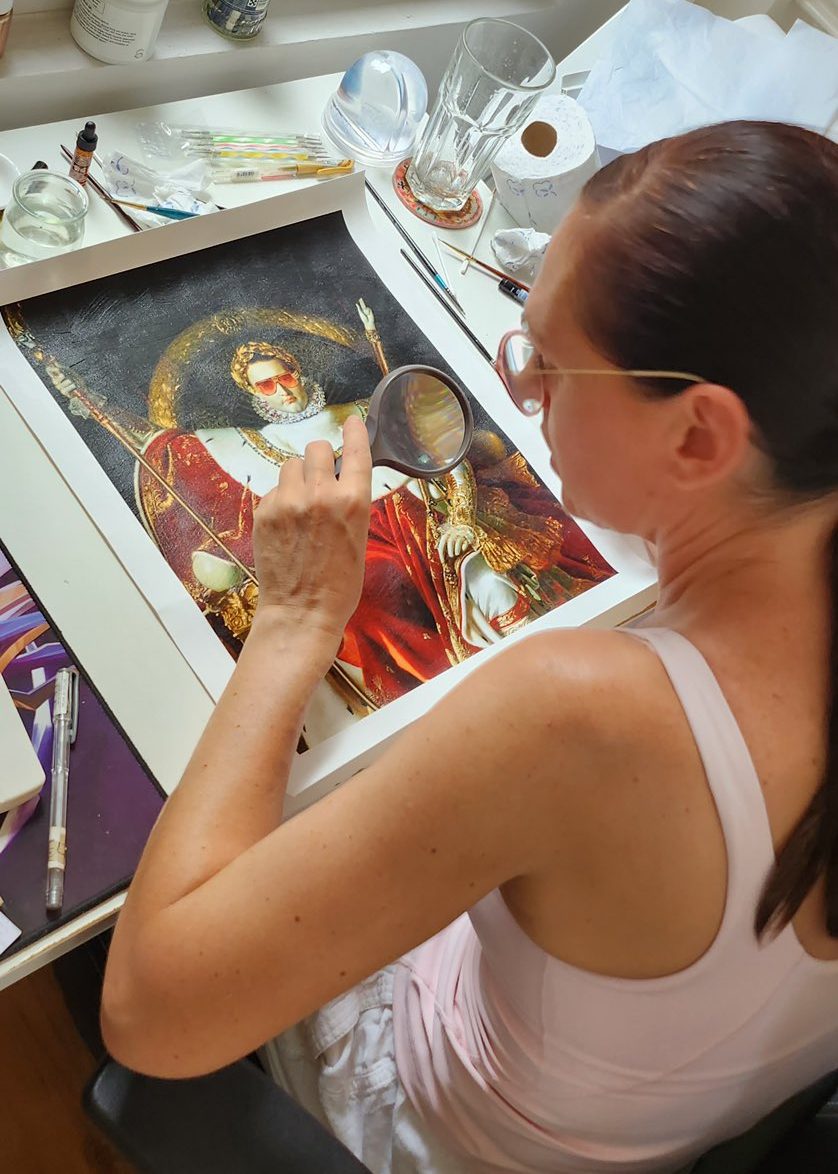
Why do you feel that incorporating subtle flourishes in your creative collaborations is so important? Are you trying to ensure that the integrity of Hilliard’s original portraits shines through?
Yes, I want to keep the intrusion minimal so that the historical properties of the work are preserved. When you view my completed work from the front, the very detailed embellishments – which I achieve with nail art tools, transparent metallic pigments and relief paste – aren’t visible. The glimmering pearls and golden highlights, etc. are only apparent when I tilt my prints to the side.

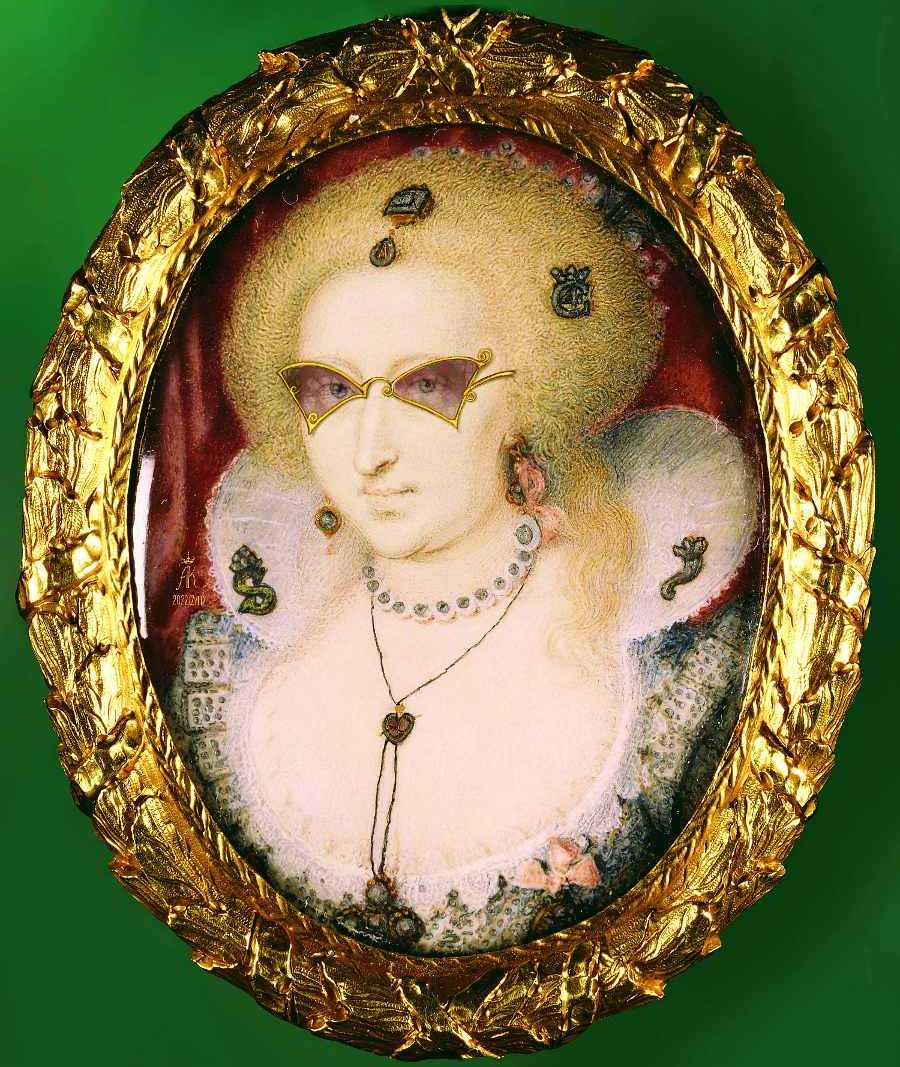
Today’s art market is endlessly infiltrated with ‘fast food’-style artificial intelligence-generated imagery. Do you have any ideas regarding how artists can still command a respectable price for their bespoke-caliber prints?
It’s crazy, indeed. It is hard to tell how collectors of digital art will react to this new tool – who knows if they’re even aware that they are looking at AI art. For now, collectors who respect human-generated artistic vision, skillful execution, and – in some cases, investment value – seem to be loyal to the work of their favorite creatives. But all of that may change when AI becomes more popular and widely used. Only time will tell.
I have such tremendous respect for the Old Masters who created such invaluable treasures. Sadly, today’s art lovers are only familiar with the big names, so my digital interventions enable me to shine a light on the lesser known yet still admirable talents.
The heart and soul of your art journey has quite literally been to frame historical artwork in a contemporary context. Are you itching to stray from the aesthetic that your brand is built on so that you can further spread your creative wings?
Yes! I am expanding on the concept of a 19th century gallery wall by adding curious objects which can be displayed together with the Imperial Eyewear artworks. It will be strange, fun and entertaining. Watch out for it :)
Additionally, I continue producing entirely original artwork/decorative items outside of my digital inventions, plus I regularly create portraits in oil. I just haven’t published or promoted those items yet because I don’t want to confuse my audience, but perhaps in the future I will share them.
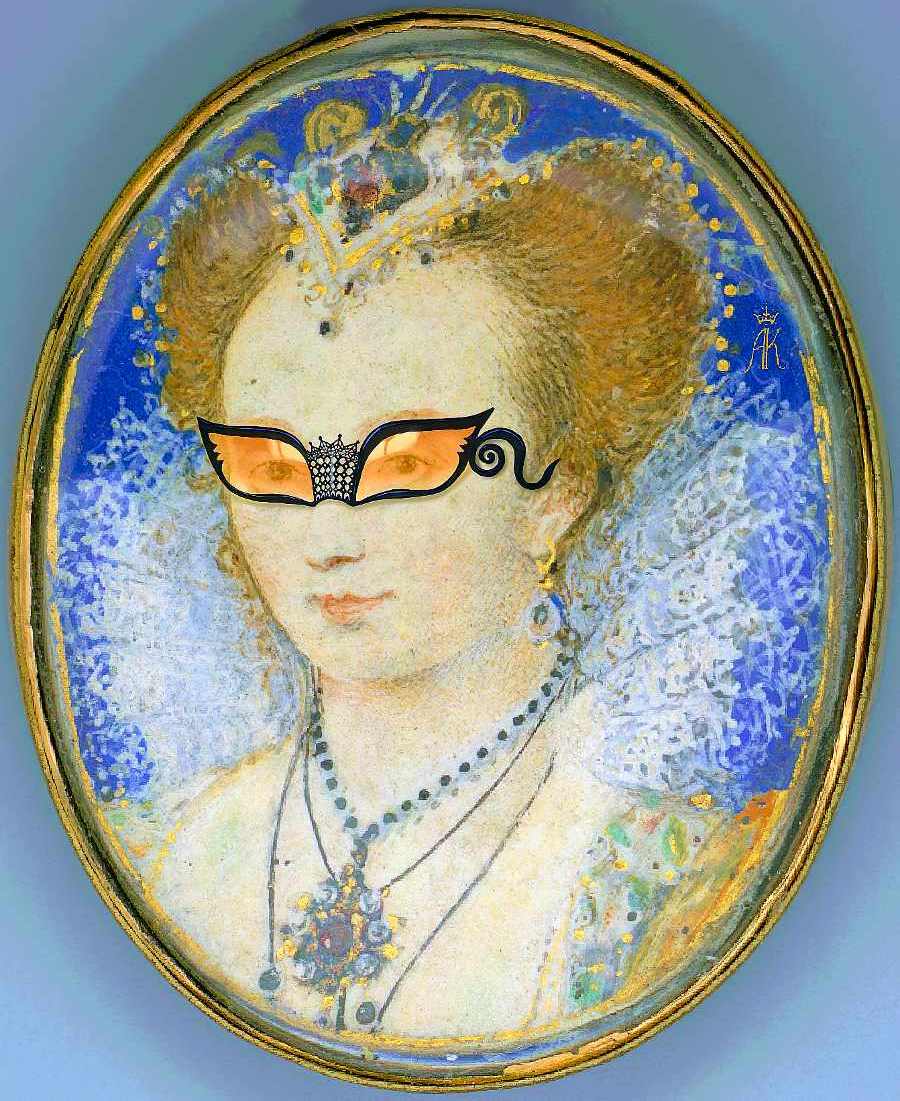

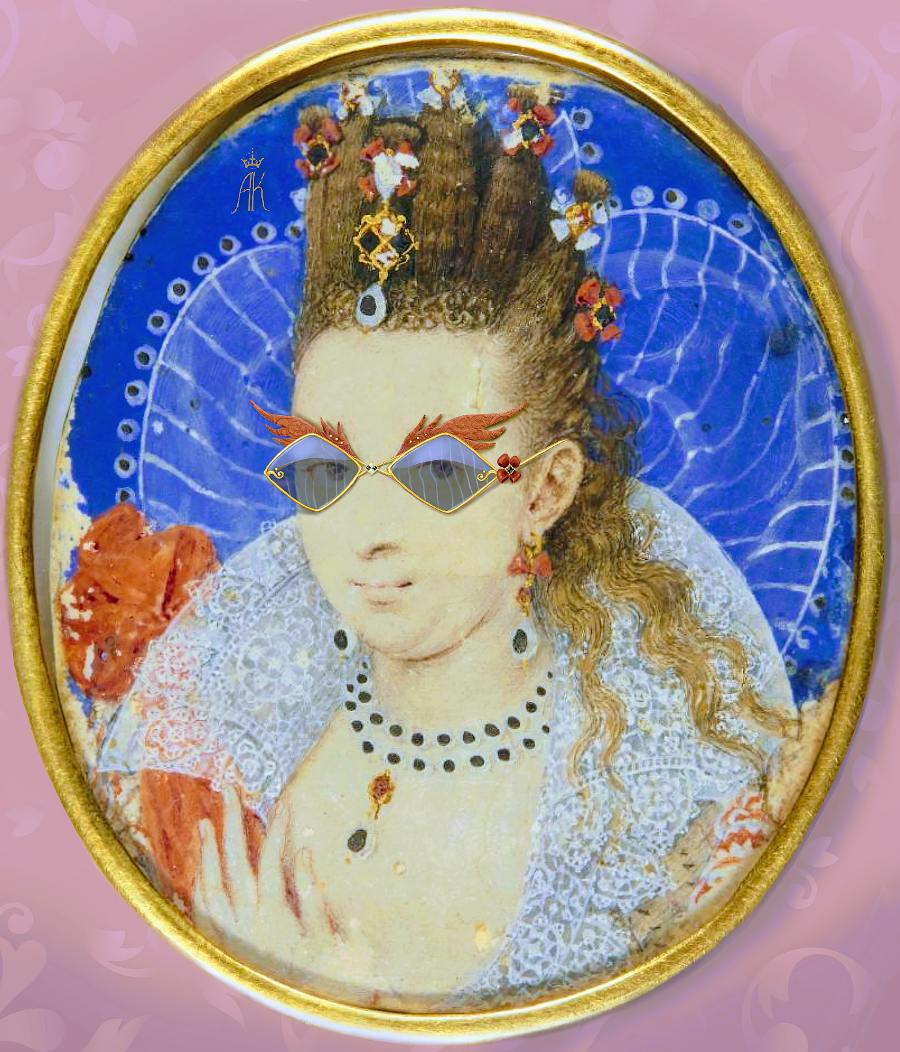
Has traversing your unique art journey inspired you to expand your creative skill set beyond the confines of your studio?
I am currently training to become a museum docent, which fulfills my insatiable appetite for historical research and will further enhance my own artistic efforts. I find European art objects from the past few centuries that fuse Asian craftsmanship with Western shapes/ideas to be particularly inspiring, so I plan to use that as the springboard for my own work. Additionally, I intend to reach out to more galleries and art institutions for collaborations.
If I hadn’t finally decided, in 2017, to go full time as an artist, the “what if” question would have endlessly haunted me. I’m very glad that I did it.

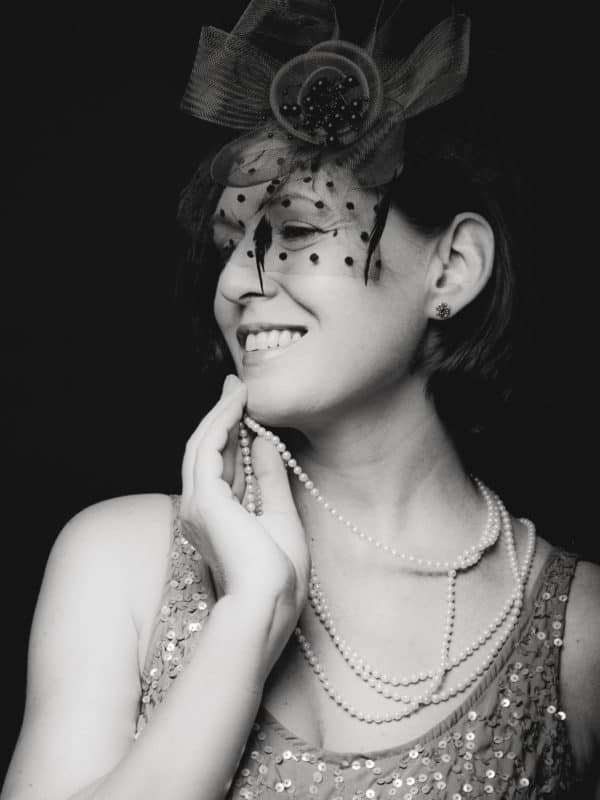

Please think about the headspace that you had pre-2017 and how it has evolved in the past six years. What are your parting thoughts to those who are seriously entertaining the idea of pursuing art professionally?
Creating art is extremely rewarding, but it’s a very individual journey. It all depends on just how much you want it. Authenticity is a big part of being an artist who makes a real impact. You have to come up with a concept that represents you and your values.
Here are some other points that I think are worth serious consideration:
- You have to believe in yourself. It takes a lot of time and promotional effort until opportunities open up and financial reward comes in. Resilience is the key to staying the course.
- You need to be very self-motivated and have good organizational skills since nobody tells you what to do.
- Sharing your art with the world is a very personal matter, so don’t expect praise and appreciation from everyone. It’s important to remember that you’re an artist because you are satisfying your need for creation.
- I initially underestimated how lonely it can feel while creating art. You have no team meetings or colleagues to chat with, etc. Sharing a studio with other artists or engaging in other activities – such as teaching – can help.
- Some artists profit from their art relatively fast while others don’t. To be totally prepared, have a financial backup plan (savings, another source of income, etc.) just in case.
Anne-Kristin Vaudour Social Media Accounts
Website | Instagram | Facebook | Twitter


